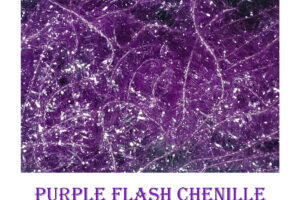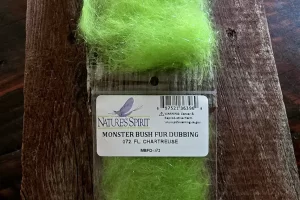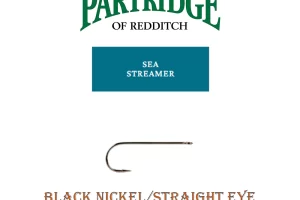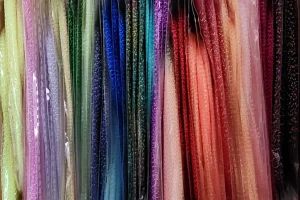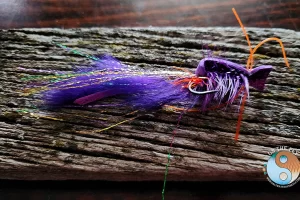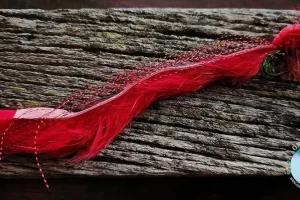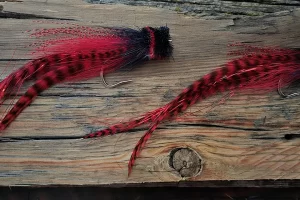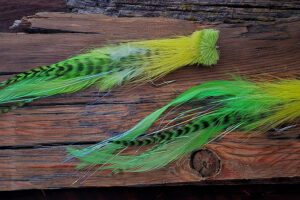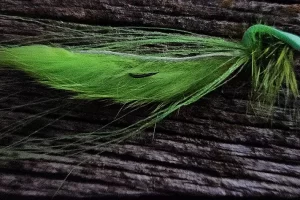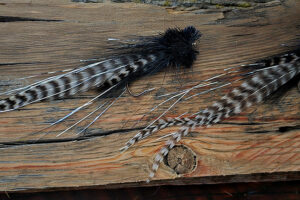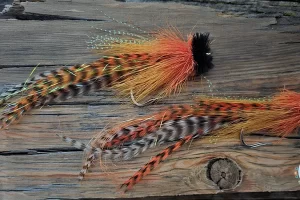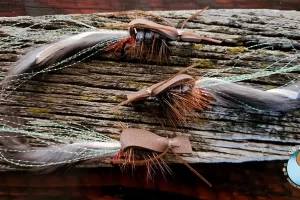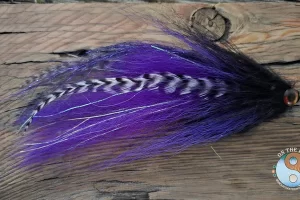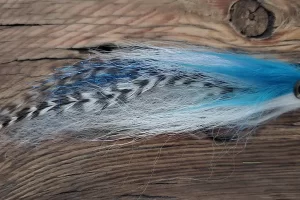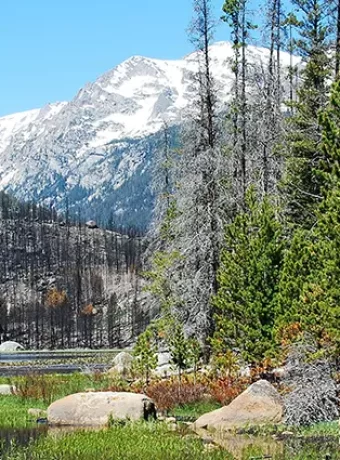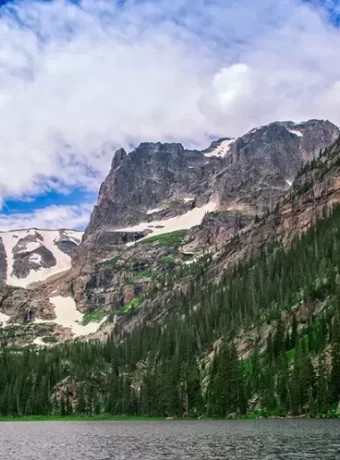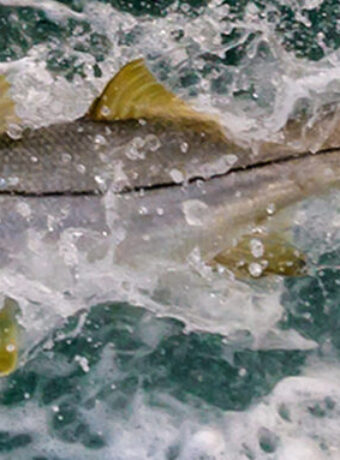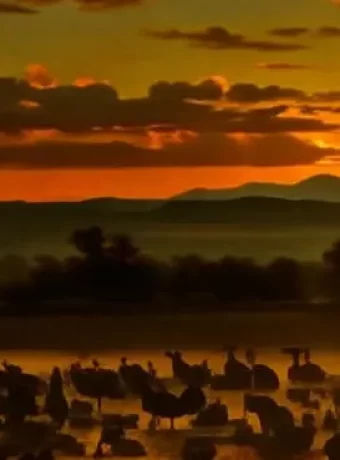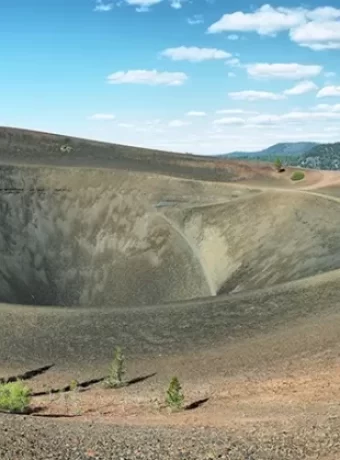North Dakota Fly Fishing: Top Spots and Expert Tips
North Dakota fly fishing might not be the first thing you think of for world-class angling. But hidden among the prairies and landscapes is a treasure for fly fishing enthusiasts. North Dakota offers diverse waters teeming with various fish, ready to surprise newcomers and seasoned anglers targeting a new adventure.
Table of Contents
Where to Cast Your Line: Prime North Dakota Fly Fishing Spots
North Dakota fishing offers a diverse range of experiences. Here are a few spots to start your North Dakota fly fishing journey.
Heart River Fly Fishing
The Heart River in North Dakota is a great spot for fly fishing. It flows through the western part of the state. This river gives you a chance to catch some nice trout. Some even grow bigger than 16 inches! The scenery is beautiful too. You’ll find rolling hills and wide-open prairies.
This river is not super famous. But, it offers some peaceful fishing. You won’t find huge crowds here. This makes it a good pick for those who want some quiet time on the water. This is a place where you can relax and enjoy nature.
The Heart River has several good access points. You can get to the river from the Heart Butte Dam. The East River Road also offers access. These spots make it easy to get your line in the water. Be sure to check the local fishing rules before you go.
Spring and fall are the best times to fish the Heart River. The weather is cool, and the fish are active. From March to May, trout are biting. September to November is another good window for trout. This makes the Heart a great place to fish during the shoulder seasons.
Dry flies work well on the Heart River. Try an Elk Hair Caddis. A Stimulator is another good choice. These flies imitate the insects that trout eat. This helps you trick those hungry fish. You can also try nymphing. A Hare’s Ear or Pheasant Tail nymph can be very effective. This method can work well when the fish are feeding below the surface.
If you want to fish the Heart River, a 9-foot, 6-weight rod is a good choice. This is a versatile setup for trout fishing. You’ll also need a weight-forward floating line. A 9-foot, 12-pound leader will work well. Remember to bring your fishing license and any other needed permits.
The Heart River might not be as well-known as some other North Dakota fishing spots. But, it offers a rewarding experience for fly fishers. So, give the Heart River a try! You might be surprised at what you find.
Nymphs, Soft Hackles & Streamers
These are my favorite types of patterns to fly fish. Though dry fly fishing can be a lot of fun if your prey is looking up. As far as streamers go Woolly Buggers and a Olive Dungeon are among my Favorite fly fishing North Dakota Streamers.
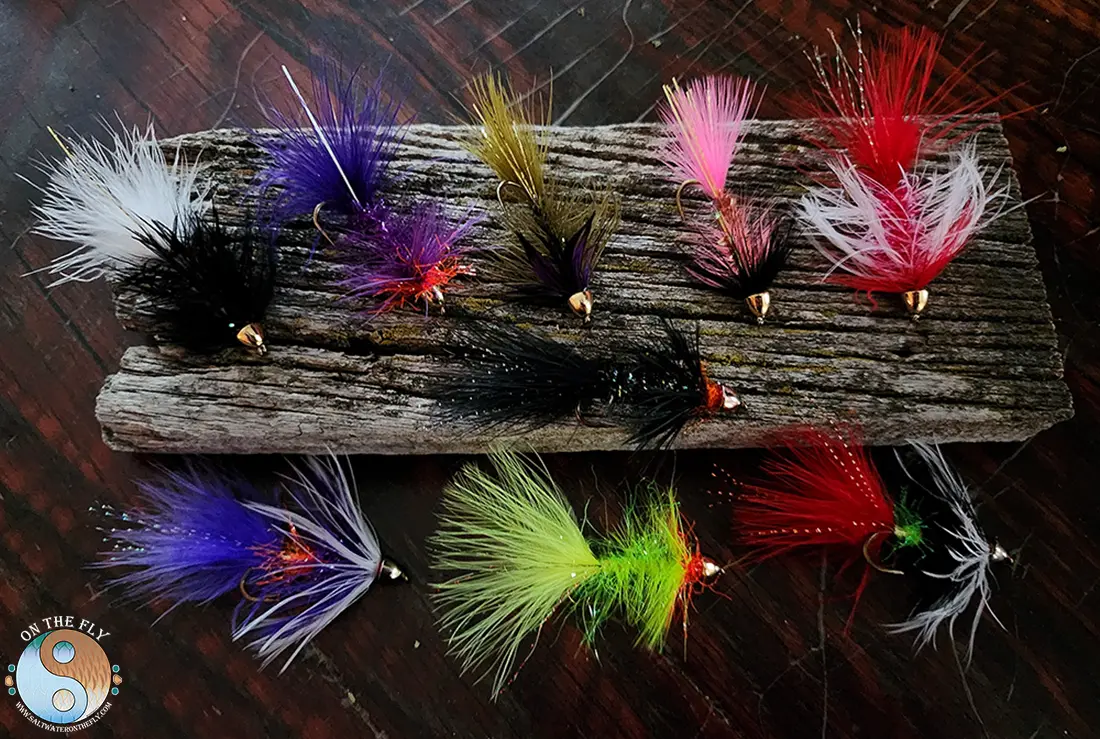
Woolly Buggers
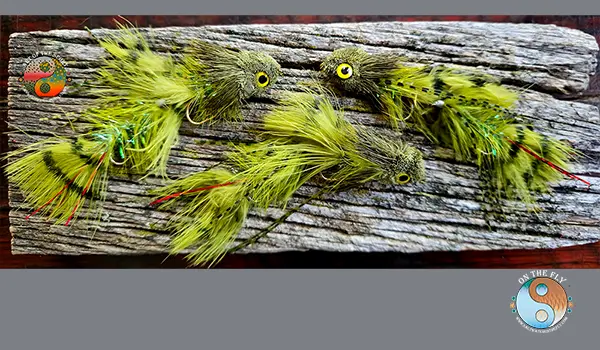
Dungeons are a Good Baitfish Pattern
Lake Sakakawea: A Walleye Wonderland
Lake Sakakawea is North Dakota’s largest lake. This North Dakota fly fishing spot has exceptional walleye fishing opportunities, with fish up to 10 pounds. Several boat launches are available, including Lake Sakakawea State Park, Van Hook Boating Access (directions), and Little Beaver Landing (directions).
Lake Sakakawea Walleye Fly Fishing
Lake Sakakawea is North Dakota’s biggest lake. It’s a fantastic spot for fly fishing, especially if you love catching walleye. This lake offers a really cool fly fishing experience because it’s so big and surrounded by beautiful scenery. Plus, there’s a good chance you’ll hook some really big walleye, some weighing up to 10 pounds!
Now, fly fishing for walleye on Lake Sakakawea is a bit different than fishing in a river. Because it’s a lake, you’ll probably want a boat. This lets you cover more water and find where those walleye are hiding. But don’t worry if you don’t have a boat. There are fishing piers around the lake you can use. Lake Sakakawea State Park is a great place to start. It has easy access to the lake and plenty of spots to cast your line.
Spring and fall are usually the best times to fish for walleye on Lake Sakakawea. The water is cooler then, so the walleye are more active. But you can still catch them in the summer, too. Just remember to get out early in the morning or later in the evening when it’s not so hot.
When you are fly fishing for walleye, try using streamers. These look like small fish, which walleye love to eat. A Clouser Minnow or a Woolly Bugger are both good choices. Make sure to cast your line near structures like rocks, points, or drop-offs. Walleye like to hang out in these areas. This is where they wait to ambush their prey.
If you have never been fly fishing before, or if you’re new to Lake Sakakawea, think about hiring a local guide. A guide can teach you the best techniques and show you the hot spots. They can also give you helpful tips about the local fishing rules and what gear works best.
Fly Tying Materials
- Purple Flash Chenille
- Fl. Chartreuse Monster Bush Fur
- Partridge Sea Streamer Hooks
- Crystallized Flash
Match the Hatch or Local Baitfish, Tie Your Favorite Pattern
I have a tied thousands of flies over the years, and I still love doing. heck I tie most days. Fly Tying Materials and More.
Garrison Dam Tailrace: Trophy Trout Territory
The Garrison Dam Tailrace is known for its trout, including rainbows and browns exceeding 20 pounds. Located below Garrison Dam, about 20 miles southwest of Cross Ranch State Park on Apple Creek, it’s a great North Dakota fly fishing location. The tailrace provides ample opportunity to target trout with various fly fishing techniques.
Garrison Tailrace Fly Fishing
The Garrison Tailrace is a special spot below the Garrison Dam on the Missouri River. This area is known for its great trout fishing. It’s a year-round fishery because the water stays warmer than the rest of the river.
This makes it a great place for some winter fly fishing in North Dakota. But it’s popular all year long! The fish here are used to seeing a lot of different flies. So, it’s a good place to try out new techniques.
The tailrace is easy to get to. There’s plenty of parking nearby. This makes wading pretty simple. But be careful! The current can be strong. This is especially true right below the dam.
The trout here can get pretty big. This includes rainbow trout, brown trout, and cutthroat trout. Because of the dam, there are fewer insects than in other parts of the river. So, the trout often feed on smaller fish.
This means you’ll want to use streamers. Streamers are a type of fly that looks like a small fish. Try using colors that match the local baitfish. White, silver, and olive are good choices. Black Dungeons work great. Along with Woolly Buggers.
Nymphing can also work well in the Garrison Tailrace. Nymphs are flies that imitate underwater insects. Try using a heavier nymph to get down to where the fish are feeding.
The Garrison Tailrace is a really great spot for North Dakota fly fishing. It’s easy to get to. And it’s good for all skill levels. Whether you’re a beginner or a pro, you’re sure to have a good time.
Apple Creek Fly Fishing
Apple Creek, tucked away in the central part of North Dakota, is a great spot for fly fishing. It’s a bit different than the bigger, more famous waters. This creek offers a more intimate, quiet fishing trip. The slower currents and clear water make it perfect for wading. This lets you get really close to the fish. You’ll find brown trout here, a feisty fish that loves a good fight.
The best time to fish Apple Creek is in the spring and fall. During these times, the water temperatures are just right for trout. The fish are actively feeding. This makes them more likely to take your fly. Summer can be good too, but go early or late in the day to avoid the heat. This is better for you and the fish.
When you’re at Apple Creek, try dry fly fishing. Small dry flies like Elk Hair Caddis or Adams work well. These flies mimic the insects that naturally float on the water’s surface. If dry flies aren’t working, try nymphing. This technique uses weighted flies that sink beneath the surface. Pheasant Tail and Hare’s Ear nymphs are good choices. These flies imitate the aquatic insects that trout eat underwater.
Access to Apple Creek is pretty easy. There are public access points along the creek. This lets you get to the water without any trouble. You can also ask local fly shops about good spots. They often have great tips on where the fish are biting.
A 9-foot, 6-weight fly rod is perfect for Apple Creek. This size is a good all-around choice for trout in smaller rivers. You should pair it with a weight-forward floating line. This line helps you cast accurately. It also lets you mend your line easily. This helps your fly drift naturally. Use a 9-foot leader with a tippet size of 5x or 6x. This thinner tippet is less visible to the trout. This will give you a better chance of catching these sometimes wary fish.
Beyond the Usual: Exploring North Dakota Fly Fishing for Warmwater Species
North Dakota offers an opportunity to target warmwater species with a fly rod. Consider these warmwater options while North Dakota fly fishing.
Targeting Walleye with a Fly Rod
North Dakota is known for its walleye. It’s a popular spot to catch walleye on the fly. Lake Sakakawea and the Red River are prime locations for fly fishing walleye with streamers. Target yellow perch here too.
Northern Pike on the Fly
North Dakota waters have abundant northern pike, an exciting fish to catch on the fly. Cross Ranch State Park provides boat ramp access for fly fishing. Some North Dakota state parks have shore access, allowing for fly fishing without a boat.
Pike Flies-North Dakota Pike Fly Fishing
- Purple Rabbit Flash Foam Gurgler
- Red Demon Rabbit Gurgler
Red River of the North: A Catfish Haven
North Dakota also offers fly fishing for catfish. The Red River, bordering North Dakota and Minnesota, offers diverse fish species. Over 70 fish species, including catfish over 30 pounds, have been documented in the Red River (North Dakota Game and Fish). This river is great for North Dakota fly fishing because of its size and accessible shorelines and boat ramps.
Red River of the North Fly Fishing
The Red River of the North, or just Red River, snakes along the North Dakota and Minnesota border. It’s a cool place to fly fish, but it’s different than the other spots we talked about. This river is big and kind of slow. It’s not like a clear, rushing mountain stream. Think muddy water, lots of weeds, and a real challenge.
But don’t let that scare you. This river holds some big fish. You can catch channel catfish, goldeye, and even the occasional walleye. Because the water isn’t clear, you have to fish by feel. It’s all about sensing the bite. This makes it super exciting when you hook something big.
The best time to fish the Red River is spring and fall. The fish are more active then. Summer can be tough because of the heat and the weeds. But, if you’re up for a challenge, summer fishing can be rewarding. You’ll just have to work a little harder.
For channel catfish, try using big, meaty flies. Think woolly buggers or clouser minnows. Goldeye are a bit pickier. They like small dry flies. A size 16 or 18 elk hair caddis is a good choice.
Access to the river is pretty easy. There are tons of public access points along the river. You can fish from the bank or wade in. But be careful. The bottom can be soft and muddy. A wading staff is a good idea.
The Red River is not your typical North Dakota fly fishing spot. It’s not about pretty scenery. It’s about the challenge and the chance to catch some really cool fish. If you’re looking for something different, this is it. Give the Red River a try. You might be surprised at what you find.
Sheyenne River Fly Fishing
The Sheyenne River meanders through North Dakota. It offers some great fly fishing. This river holds trout over 18 inches. It’s a beautiful spot for a relaxing day. But there’s more to the Sheyenne than just trout.
The Sheyenne River changes as it flows. The upper section tumbles through hills and valleys. This makes for classic trout water. Downstream, it widens and slows. This is where you might find smallmouth bass, walleye, or northern pike. This variety makes it exciting for fly fishers of all skill levels.
Spring is a great time to fish the Sheyenne. The trout are hungry after a long winter. The water is clear and cool. This makes for ideal dry fly fishing conditions. Try using an Elk Hair Caddis or a Stimulator. These flies imitate the insects hatching this time of year.
Summer on the Sheyenne can be hot. The fish get a little lazy. But, this is the perfect time to try streamer fishing. Big, flashy streamers, like a Woolly Bugger or Muddler Minnow, can entice those sluggish bass and pike. Nymphing with a Hare’s Ear or Pheasant Tail can also be productive.
As fall approaches, the water cools. The trout become active again. This is another good time for dry fly fishing. Or, try nymphing deeper pools with a heavier fly. You might also hook into some walleye moving upstream.
The Sheyenne River is easy to get to. Public access points are sprinkled along its banks. The Sheyenne River State Park is a particularly good place to start. They offer camping, hiking, and of course, fishing. This park provides a nice basecamp for your fly fishing adventure. It also gives you a chance to explore all the river has to offer. So, pack your rod, grab your waders, and get ready for some North Dakota fly fishing on the Sheyenne.
Iceland Fly Fishing, Trip of a Lifetime
When to Go: Best Seasons for North Dakota Fly Fishing
Each season offers unique North Dakota fly fishing. This breakdown helps plan your fly fishing trip. Be sure to review the stocking reports for any recent fish stocking programs at your location for optimal results.
| Season | Best Time for | Tip |
|---|---|---|
| Spring | March to May. Trout and Walleye fishing. | Devils Lake in May offers active walleye and pike. |
| Summer | June to August. Warm water species (smallmouth bass, perch and northern pike). | Use North Dakota Game and Fish’s interactive fishing map to find spots. This map details species, directions, and fishing reports. |
| Fall | September to November. Trout and walleye fishing when water cools. | Target tailraces and reservoirs during the fall months. |
Gear Up: Essential Equipment for North Dakota Fly Fishing
The right gear enhances your North Dakota fly fishing trip. The proper gear includes wading boots, fly reels, and a quality fly rod.
Rod and Reel
A 5-7 weight, 8.5-9.5 foot rod with a balancing reel provides versatility. A 9-foot, 6-weight fly rod works well for trout, smallmouth bass, and walleye, preferred choice . You may also want to carry several different fishing rods and reels if you’ll be using several techniques like a streamer or bait and you intend on catching larger fish like a catfish which may require heavier equipment for more successful outcomes.
Fly Line
A weight-forward floating line helps with casting for most North Dakota fly fishing. Consider a fly line specifically tailored to a walleye bite if that is your target species and technique of choice.
Leader and Tippet
Leaders range from 9-12 feet. A 4x tippet is suitable for walleye and trout. For trophy trout, use up to a 15-pound test leader. Bring extras if your fishing includes rainbow trout which are know to break the line at times if using smaller weights.
Flies
Carry an assortment of dry flies, nymphs, and streamers for varied North Dakota fly fishing.
- Woolly Buggers (various colors/sizes).
- Clouser Minnows.
- Streamers (general baitfish imitations).
- Smelt imitation flies.
- Elk Hair Caddis and Stimulators (dry fly fishing targeting trout/bass).
- Hares Ear and Pheasant Tail Nymphs (for trout/walleye).
Regulations and Resources
A North Dakota fishing license is required. Residents 16+ pay $18, those 65+ pay $5. Licenses are available online. Non-residents pay $45.
Turtle River Fly Fishing
The Turtle River carves its way through central North Dakota. It may not be as famous as the Missouri, but it holds its own special charm for fly fishers. This river offers a different kind of experience, one steeped in quiet beauty and exciting challenges. Think peaceful mornings, the sun just peeking over the horizon as you cast your line. The Turtle River is a fantastic spot for a relaxing day, away from the crowds.
Brown trout are the main attraction here. While they might not be as big as the ones in the Missouri, they’re feisty and put up a good fight. The average size is around 12-14 inches, but you can find some bigger ones if you’re lucky. And there’s something extra special about outsmarting a wily brown trout on a small river. It’s a test of skill, patience, and a bit of luck.
Access to the river is pretty easy. Several bridge crossings and public land areas let you get right to the water’s edge. This makes the Turtle River perfect for wading. Just pull on your waders, grab your rod, and find your spot. Because it’s smaller than some of the other rivers, you can easily explore different sections and find your own honey hole.
This river offers great opportunities for different fly fishing techniques. Dry fly fishing can be really effective, especially during the summer months when hatches are happening. A small Elk Hair Caddis or a Stimulator can bring some explosive strikes. If the fish aren’t rising, try nymphing with a Hare’s Ear or a Pheasant Tail. These patterns mimic the insects that trout eat, and they can be deadly effective. For bigger fish, try swinging a streamer like a Woolly Bugger. This can entice larger browns and even the occasional northern pike hiding in the deeper pools.
If you’re looking for a North Dakota fly fishing adventure that’s a little off the beaten path, give the Turtle River a try. It’s a great place to reconnect with nature, hone your skills, and maybe even land a trophy brown trout.
Nygren Dam Fly Fishing
North Dakota fly fishing at Nygren Dam? It might not be the first spot that jumps to mind. But this hidden gem, nestled in the beautiful Pembina Gorge, offers a cool surprise. It’s a fantastic place to chase trout with your fly rod.
The tailwaters below Nygren Dam stay pretty cold. This makes it a perfect summer escape when other spots are too warm. The trout love it! You’ll find rainbows and browns eager to take your fly.
Wade fishing is easy here. The river below the dam is pretty shallow and has a gentle current. This makes it perfect for beginners or anyone looking for a relaxing fly fishing trip. But don’t let the calm water fool you. There are some real monsters lurking beneath the surface.
What flies should you use? Small nymphs, like Pheasant Tails and Hare’s Ears, often do the trick. But dry fly fishing can be awesome too. If you see some fish rising, try a small Elk Hair Caddis or a Parachute Adams.
The scenery around Nygren Dam makes the fishing even better. Towering trees and rugged cliffs make you feel a world away. It’s the perfect place to escape the hustle and enjoy the quiet of nature.
So, next time you’re looking for a North Dakota fly fishing adventure, think about Nygren Dam. It’s a quiet spot with amazing fishing and beautiful views. You might just discover your new favorite fishing hole. Remember to check the North Dakota Game and Fish Department regulations before heading out. Get your fishing license and learn about any special rules for the area. Then grab your rod, your flies, and get ready for some amazing fly fishing.
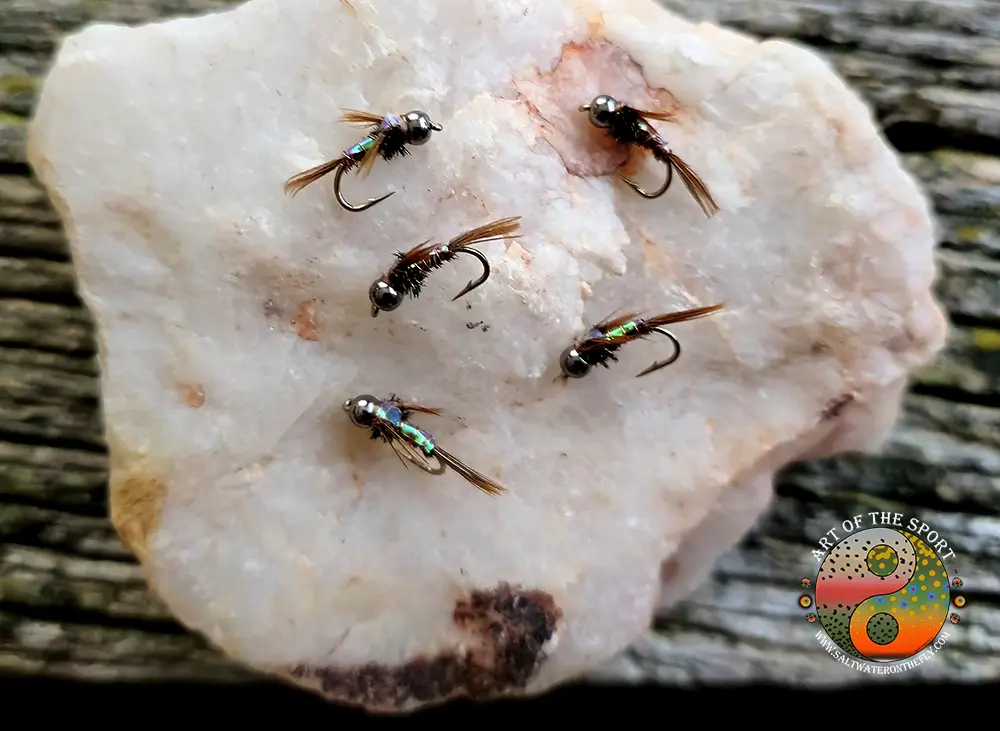
Flash Back Pheasant Tails
Pheasant Tails, Hare’s ears, baetis nymphs, soft hackles are a great way to search riffles and tail outs. Nymph Patterns are a favorite way to fly fish.
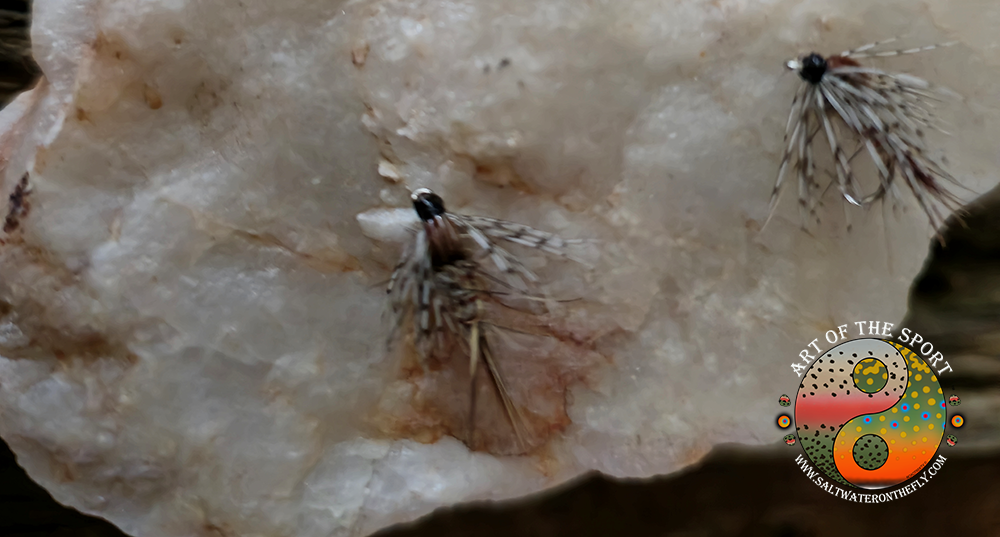
Soft Hackle Pheasant Tails
Missouri River of North Dakota Fly Fishing
The Missouri River carves its way through North Dakota. This creates a special place for fly fishing fans. It’s a top spot if you love the outdoors. The river is big, making it a fun challenge. Many fish here grow bigger than 20 inches. This river is famous for its trout. But you’ll find more than trout in these waters. It’s a good place to catch walleye, smallmouth bass, and northern pike too.
This river gives you many places to cast your line. Some spots are easier to get to than others. You can check out spots in Lewis and Clark State Park. Or, try Fort Abraham Lincoln State Park. Both parks give you nice river access.
Spring and fall are great times to fish the Missouri. The weather is cool. The trout and walleye are active. From March to May, the river is perfect for these fish. September to November is another good window. The water cools down then, and the fish bite more.
Summer is a good time to fish also. But it’s best for different kinds of fish. The warm water brings out the smallmouth bass. Northern pike and perch are also biting in the summer. June to August is the best time to fish for these.
Here are a few tips to make your fishing trip better:
- Dry Fly Fishing: This works great for trout and smallmouth bass. Use flies like the Elk Hair Caddis or the Stimulator. These look like bugs that land on the water.
- Nymphing: This method uses nymphs. These look like bugs that live under the water. Try the Hare’s Ear or the Pheasant Tail. These work for trout and walleye.
- Streamer Fishing: If you want to catch bigger fish, use streamers. The Woolly Bugger and the Muddler Minnow are good choices. These trick bigger fish like northern pike and walleye.
If you want to fish the Missouri River, you’ll need some gear. A good fly rod is important. A 9-foot, 5-weight rod works for most fishing in North Dakota. You’ll also need the right line. A weight-forward floating line works most of the time. But sometimes, a sinking line is better. This depends on the fish you’re after and the water. Leaders are also important. Use a 9-foot, 12-pound leader for trout and smallmouth bass. If you are going after bigger fish, like walleye and northern pike, use a 12-foot, 15-pound leader.
Muskie Flies-Fly Fish North Dakota Musky
- Black Red Buford Muskie Fly
- Chartreuse Yellow Buford Muskie Fly
- Chartreuse Rabbit Gurgler for Musky Top Water Action
- Black Buford Musky Fly
- Orange Black Buford Musky Fly
- Mousey Gurgler
- Black Purple Secret
- Blue White Secret
Baitfish, surface fly pattern, are great for attracting large predator species such as Muskie, Pike, and catching many other species of fish On the Fly.
Fly Fish North Dakota Muskie in Lake Audubon, Lake Ashtabula and Garrison Diversion Lakes New Johns Lake and East Park
Want to chase muskie on the fly? North Dakota has some great spots. Think about Lake Audubon, Lake Ashtabula, and the Garrison Diversion Lakes. These are good places to start. New Johns Lake and East Park are worth checking out too.
Lake Audubon is huge. This means lots of room for muskie to roam. Because it’s so big, a boat is helpful. But shore fishing can also work. Look for weed beds and rocky points. These are good places to cast your fly.
Lake Ashtabula is another great option. It’s known for its clear water. This can make sight fishing easier. But it also means muskie can be spooky. So, long casts and a stealthy approach are key. This lake also has some nice bays and inlets. These areas can hold good numbers of muskie.
The Garrison Diversion Lakes offer a different experience. This is a chain of smaller lakes. Many have healthy muskie populations. These lakes can be a good choice for wading. Or you can fish from a small boat or kayak. The best times to fish for muskie are usually spring and fall. Though summer can be good too, if you fish early or late in the day.
New Johns Lake is another spot to try. This smaller lake is known for its muskie fishing. It can be a good place to learn the ropes. Because it’s not as vast as some of the other lakes. East Park is another smaller option. It offers a chance to catch muskie. But it’s also a good spot for other fish like pike and walleye.
For muskie, big flies are the name of the game. Think large streamers and bucktail patterns. Colors like black, white, and chartreuse are good choices. A sturdy fly rod is important too. This will help you cast those big flies. And it will give you the power to fight these strong fish. A 9-weight or 10-weight rod is a good starting point.
Into Muskie Fly Fishing, come check some great Muskie on the fly in Montana.
FAQs about North Dakota Fly Fishing
Is there good fly fishing in North Dakota?
Yes, North Dakota offers excellent fly fishing, especially for walleye, trout, and northern pike. The Missouri River, Devils Lake, and the Garrison Dam Tailrace are popular spots.
Are there any trout streams in North Dakota?
North Dakota has fewer traditional trout streams. However, the Missouri River and the Garrison Tailrace are hotspots for rainbow and brown trout, including trophy-sized fish. Look to Apple Creek near Cross Ranch for more options as well.
What state has the best fly fishing?
Montana and North Dakota are known for trout fly fishing. The best state depends on target species, environment, cost, and stocking programs. Montana is famous for streams like Rock Creek, the Bitterroot, and the Madison rivers. North Dakota offers the potential for larger trophy trout.
Does North Dakota have good fishing?
Yes, North Dakota has high-quality fishing with well-stocked waters and thriving fish populations. With one million acres dedicated to natural ecosystems like Turtle River State Park near Grand Forks, which stocks thousands of trout annually, anglers will find good fishing opportunities. Grand Forks provides another fishing location nearby in English Coulee which includes both rainbow and brown trout species, stocked rainbow smelt and even yellow bullhead. These fishing locations have diverse opportunities to meet the needs of all types of fishing enthusiasts and offer fishing North Dakota.
Conclusion of North Dakota Fly Fishing
North Dakota fly fishing offers an unforgettable adventure. Abundant waters, infrastructure, and resource preservation efforts create a unique experience. The wide-open vistas, clear waters, and strong fish combine to create something special. Consider North Dakota for your next fly fishing adventure

